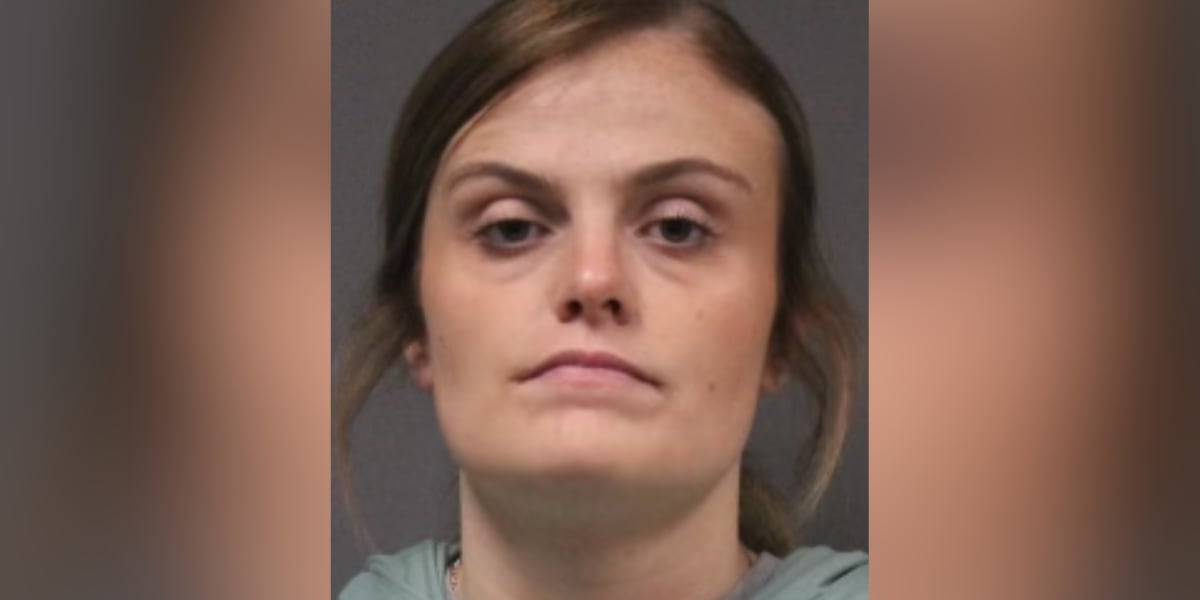Rutgers-Newark Graduate Helps Survivors of Violence and Abuse Find Support – Rutgers Newark

Report on the Contributions of Karina Avila to Sustainable Development Goals
This report outlines the work of Rutgers-Newark graduate Karina Avila, whose professional and academic endeavors significantly contribute to the advancement of several United Nations Sustainable Development Goals (SDGs). Her efforts focus on providing justice and safety for survivors of domestic violence, sexual abuse, and human trafficking, with a particular emphasis on vulnerable immigrant communities.
Advocacy in Support of Gender Equality and Justice (SDG 5 & SDG 16)
As an advocate with the Community Affairs and Resource Center (CARC) in Monmouth County, Ms. Avila’s work is central to achieving key targets within the SDGs.
- SDG 5: Gender Equality: By assisting survivors of domestic violence and sexual abuse, many of whom are women and children, she directly addresses Target 5.2, which aims to eliminate all forms of violence against all women and girls.
- SDG 16: Peace, Justice and Strong Institutions: Ms. Avila serves as a crucial liaison between law enforcement and immigrant crime victims. In guiding them through the legal system, she promotes Target 16.3, which seeks to ensure equal access to justice for all. Her work ensures that vulnerable populations are not excluded from safety and legal protections, thereby strengthening public safety and institutional trust.
Educational Path and Reducing Inequalities (SDG 4 & SDG 10)
Ms. Avila’s academic journey has been instrumental in preparing her for a career dedicated to social impact and equity.
- Academic Excellence: A Summa Cum Laude graduate from the School of Public Affairs and Administration (SPAA) at Rutgers-Newark, she also participated in the Honors Living-Learning Community (HLLC).
- Contribution to SDG 4 (Quality Education): Her education at SPAA enabled her to build upon her passion and real-world experience, demonstrating how higher education can be leveraged for community betterment. This aligns with Target 4.7, which emphasizes education for sustainable development and global citizenship.
- Contribution to SDG 10 (Reduced Inequalities): Both SPAA and HLLC validated her lived experience as a child of immigrants, reinforcing its value in academic and societal contexts. This focus on empowering individuals from marginalized backgrounds directly supports Target 10.2, which calls for the social, economic, and political inclusion of all.
Professional Experience in Combating Human Trafficking (SDG 8 & SDG 16)
Prior to and during her time at Rutgers-Newark, Ms. Avila accumulated significant professional experience directly related to key SDG targets.
- Legal Representation: At the Latin American Legal Defense Fund (LALDEF), she became a partially accredited Department of Justice (DOJ) representative, providing direct legal services to immigrants.
- Anti-Trafficking Efforts: Her volunteer work with the New Jersey Coalition Against Human Trafficking (NJCAHT) and her advocacy for victims of human trafficking contribute to Target 8.7 (end modern slavery and human trafficking) and Target 16.2 (end abuse, exploitation, and trafficking of children).
Future Aspirations and Building Resilient Communities (SDG 10 & SDG 16)
Ms. Avila’s future plans are aimed at scaling her impact and fostering long-term community resilience, reinforcing the principles of the SDGs.
- Career Goals: She intends to earn a law degree and work as a staff attorney at a non-profit organization or establish her own to support immigrant communities.
- Fostering Resilience: Ms. Avila believes in the power of grassroots networks to keep communities safe and resilient, especially during periods of uncertainty. This perspective aligns with the overarching goal of SDG 16 to build effective, accountable, and inclusive institutions at all levels, and with SDG 10 to reduce inequalities within and among countries by empowering local communities.
1. Which SDGs are addressed or connected to the issues highlighted in the article?
-
SDG 5: Gender Equality
The article directly addresses this goal by focusing on Karina Avila’s work with survivors of “domestic violence and sexual abuse,” noting that many victims are “women and children.” This work aims to protect women and girls from violence and exploitation, a core tenet of SDG 5.
-
SDG 10: Reduced Inequalities
This goal is central to the article, which highlights the vulnerability of the “immigrant community.” Avila’s efforts to serve as a “bridge between law enforcement and immigrant crime victims” and her belief that “By leaving out the immigrant community, you’re leaving out a vital piece of the people you serve” directly tackle the inequalities faced by marginalized groups based on their origin and status.
-
SDG 16: Peace, Justice and Strong Institutions
The article is fundamentally about promoting justice and building inclusive institutions. Avila’s work involves helping victims of “human trafficking” and guiding them “through an often intimidating and confusing legal system.” This effort to ensure access to justice for all, reduce violence, and end abuse and exploitation aligns perfectly with the objectives of SDG 16.
-
SDG 4: Quality Education
The article connects quality education to social impact. It details how Avila’s time at Rutgers-Newark, specifically the School of Public Affairs and Administration (SPAA) and the Honors Living-Learning Community (HLLC), “equipped her with the skills to make a difference.” Her education validated her “real-world experience” and enabled her to “amplify her impact,” demonstrating how higher education can empower individuals to contribute to societal betterment and sustainable development.
-
SDG 8: Decent Work and Economic Growth
This goal is relevant through its focus on eradicating modern slavery and human trafficking. The article explicitly states that Avila’s work includes helping “victims of human trafficking,” which is a direct contribution to ending exploitation and forced labor.
2. What specific targets under those SDGs can be identified based on the article’s content?
-
Target 5.2: Eliminate all forms of violence against all women and girls in the public and private spheres, including trafficking and sexual and other types of exploitation.
This target is identified through the description of Avila’s work to “help survivors of domestic violence and sexual abuse, including victims of human trafficking,” with a specific mention that many victims are “women and children.”
-
Target 16.2: End abuse, exploitation, trafficking and all forms of violence against and torture of children.
The article’s mention of helping victims who are “women and children suffering from trauma and fear” directly relates to this target’s aim of protecting children from violence, abuse, and trafficking.
-
Target 16.3: Promote the rule of law at the national and international levels and ensure equal access to justice for all.
This is demonstrated by Avila’s role as an advocate who “guides them through an often intimidating and confusing legal system” and provides “direct legal representation to immigrants.” Her work ensures that vulnerable, non-English speaking victims can access the justice system.
-
Target 10.2: By 2030, empower and promote the social, economic and political inclusion of all, irrespective of… origin… or other status.
The article highlights Avila’s focus on the “immigrant community,” a group often excluded. Her work to help them “access what they need” and ensure they are not left out of public safety initiatives is a direct effort to promote their social inclusion.
-
Target 8.7: Take immediate and effective measures to eradicate forced labour, end modern slavery and human trafficking…
This target is clearly identified by the statement that a focus of Avila’s job is helping “victims of human trafficking” find safety and justice.
-
Target 4.7: By 2030, ensure that all learners acquire the knowledge and skills needed to promote sustainable development… including… human rights, gender equality, promotion of a culture of peace and non-violence…
Avila’s story shows how her education at Rutgers-Newark enabled her to pursue a career promoting justice and supporting marginalized communities. The article states her education helped her “amplify my impact” and see the “value of what I’ve done” for the “betterment of society,” which reflects the outcome described in this target.
3. Are there any indicators mentioned or implied in the article that can be used to measure progress towards the identified targets?
-
Provision of legal and support services to victims of violence.
An implied indicator for targets 5.2, 16.2, and 8.7 is the number of survivors of domestic violence, sexual abuse, and human trafficking who are successfully guided through the legal system. The article describes Avila’s work as helping people “access what they need” and providing “direct legal representation,” which are measurable actions.
-
Improved access to justice for vulnerable groups.
For target 16.3, a key indicator is the level of access to justice for immigrant communities. The article implies this can be measured by the effectiveness of “bridge” services between law enforcement and immigrant victims, and the number of individuals who receive legal interpretation and representation, as Avila did through her certificate and DOJ accreditation.
-
Inclusion of marginalized communities in public services.
An indicator for target 10.2 is the extent to which immigrant communities are included in public safety frameworks. Avila’s statement, “By leaving out the immigrant community, you’re leaving out a vital piece of the people you serve,” suggests that progress can be measured by how well public services are designed to include and protect these communities.
-
Graduates applying education for social betterment.
For target 4.7, an indicator is the number of graduates who, like Avila, use their higher education to work in non-profits and advocacy roles that support “marginalized communities” and promote justice. Her career path is presented as a direct result of an education that helped her “build upon your passion.”
4. Table of SDGs, Targets, and Indicators
| SDGs | Targets | Indicators (Identified or Implied in the Article) |
|---|---|---|
| SDG 5: Gender Equality | 5.2: Eliminate all forms of violence against all women and girls… including trafficking and sexual… exploitation. | The number of women and children survivors of domestic violence and sexual abuse who receive support and access to justice. |
| SDG 16: Peace, Justice and Strong Institutions | 16.2: End abuse, exploitation, trafficking and all forms of violence against… children.
16.3: Promote the rule of law… and ensure equal access to justice for all. |
The number of child victims of abuse and trafficking provided with assistance.
The level of access to the legal system for immigrant crime victims, measured by the provision of legal guidance and representation. |
| SDG 10: Reduced Inequalities | 10.2: Empower and promote the social… inclusion of all, irrespective of… origin… or other status. | The extent to which public safety and legal services are made accessible to and inclusive of immigrant communities. |
| SDG 8: Decent Work and Economic Growth | 8.7: Take immediate and effective measures to eradicate… modern slavery and human trafficking. | The number of human trafficking victims identified and provided with support and legal services to find safety and justice. |
| SDG 4: Quality Education | 4.7: Ensure that all learners acquire the knowledge and skills needed to promote sustainable development… human rights… and a culture of peace. | The number of graduates using their education and skills to work in non-profit organizations that support marginalized communities and promote social justice. |
Source: newark.rutgers.edu

What is Your Reaction?
 Like
0
Like
0
 Dislike
0
Dislike
0
 Love
0
Love
0
 Funny
0
Funny
0
 Angry
0
Angry
0
 Sad
0
Sad
0
 Wow
0
Wow
0



























;Resize=805#)



















































